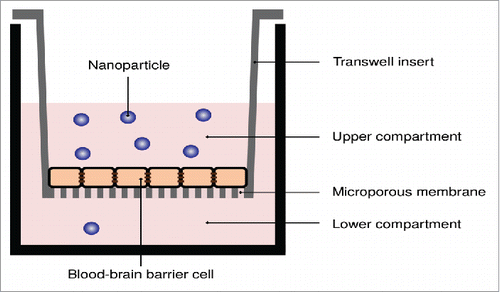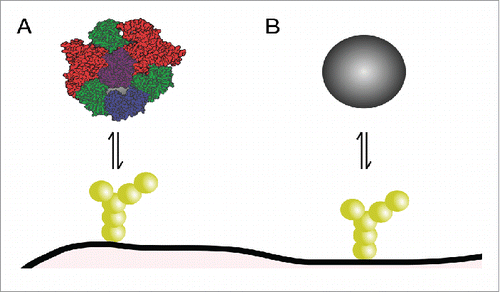Figures & data
Figure 1. Transwell system applied to measure the transport of nanoparticles across in vitro blood-brain barriers. A porous membrane, upon which the in vitro blood-brain barrier model is grown, separates two compartments. The nanoparticles are added to the upper compartment, and the number of nanoparticles that passes through to the lower compartment is measured.

Figure 2. Potential issues with applying transwell systems to measure the transport of nanoparticles across in vitro blood-brain barriers.

Figure 3. Role of biomolecular corona in nanoparticle interactions with the blood-brain barrier. (A) Corona-covered nanoparticle interacting with cells of the barrier vs. (B) bare nanoparticle. Only the former situation is expected to occur in vivo.

Figure 4. Indirect effects due to nanoparticle uptake in an in vitro blood-brain barrier. Despite the nanoparticles not being transported across the barrier (at least not to a significant degree), signaling takes place between the blood-brain barrier cells and astrocytic cells grown below them. Image adapted from ref. Citation86.


